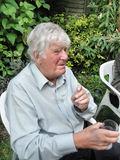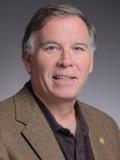2012 Haagen-Smit Prize Winners
The Executive Editors and the Publisher of Atmospheric Environment take great pleasure in announcing the 2012 ''Haagen-Smit Prize'', designed to recognize outstanding papers published in Atmospheric Environment. The Prize is named in honor of Prof. Arie Jan Haagen-Smit, a pioneer in the field of air pollution and one of the first editors of the International Journal of Air Pollution, a predecessor to Atmospheric Environment.
The ''Haagen-Smit Prize'' is given annually to two papers previously published in Atmospheric Environment and covering different science areas. Additional information about this award and the selection committee members can be found at http://geo.arc.nasa.gov/sgg/singh/. The nominating letters printed below describe the two 2012 winning papers.
Nomination Letters
 Wayne, R.P., I. Barnes, P. Biggs, J. P. Burrows, C. E. Canosa-Mas, J. Hjorth, G. Le Bras, G. K. Moortgat, D. Perner, G. Poulet, G. Restelli, and H. Sidebottom, The Nitrate Radical - Physics, Chemistry, and the Atmosphere, Atmos. Environ., 25, 1-203 (1991).
Wayne, R.P., I. Barnes, P. Biggs, J. P. Burrows, C. E. Canosa-Mas, J. Hjorth, G. Le Bras, G. K. Moortgat, D. Perner, G. Poulet, G. Restelli, and H. Sidebottom, The Nitrate Radical - Physics, Chemistry, and the Atmosphere, Atmos. Environ., 25, 1-203 (1991).
The 203-page article entitled The Nitrate Radical - Physics, Chemistry and the Atmosphere, Source also known as the Nitrate Radical Review by Wayne et al. was published in 1991 to meet the needs of researchers in atmospheric chemistry. The nitrate radical, NO3, is one of the most important free radical and oxidizing agent in the Earth's atmosphere, especially in polluted urban environments and at night. The radical was first found in the stratosphere, and shortly afterwards in night-time summer smog in California and in Colorado. NO3 initiates the chemical transformation and oxidative degradation of volatile organic compounds in the troposphere at night. The production of OH, a daytime oxidant, at night is an unanticipated consequence of interesting aspects of NO3 chemistry. With evolution of in situ and remote sensing measurement techniques, the study of the significance of NO3 in atmospheric chemistry remains a current and highly active topic of research.
The Review by Wayne et al. was an exhaustive and thorough compendium of knowledge existing at the time and covered all aspects of the physics and chemistry of the nitrate radical, including laboratory methods, spectroscopy, structure, photochemistry, chemical reactions, sources and sinks, and field measurements. The authors who contributed were leaders in their specialist areas, and represented, as far as possible, all the research effort on the radical that was being pursued in Europe. This review of the nitrate radical became a model for subsequent similar exercises that addressed and described the physics and chemistry of key radicals that play a part in thermal and photochemical atmospheric transformations that have environmental importance. About 450 references were presented in the work. The authors ended their Review by suggesting a series of unresolved issues concerning the radical that they judged worthy of further research. The Nitrate Radical Review turned out to be a very timely study of a rapidly developing field, and it has served as the definitive treatise on the nitrate radical for 21 years now. By the end of 2012, it will have received nearly 500 literature citations.
Prof. Wayne and his co-workers are well known scientists who have contributed immensely in making Atmospheric Environment a premier journal in its field. I strongly recommend that the Haagen-Smit Prize be awarded to this very worthy effort.
Nominator: R. M. Harrison, Univ. of Birmingham, UK
Prof. Richard P. Wayne, Oxford University, Oxford, Ox1 3QZ, UK (Richard.Wayne@Chem.ox.ac.uk)
 Thurston, G.D. and J.D. Spengler, Quantitative Assessment of Source Contributions to Inhalable Particulate Matter Pollution in Metropolitan Boston, Atmos. Environ., 19, 9-25 (1985).
Thurston, G.D. and J.D. Spengler, Quantitative Assessment of Source Contributions to Inhalable Particulate Matter Pollution in Metropolitan Boston, Atmos. Environ., 19, 9-25 (1985).
I would like to nominate "A Quantitative Assessment of Source Contributions to Inhalable Particulate Matter Pollution in Metropolitan Boston" by George D. Thurston and John D. Spengler for the 2012 Haagen-Smit Prize. This paper uses a simple, yet innovative, factor analysis-based receptor source apportionment method to identify and quantify which sources contributed how much, respectively, to particulate matter mass in the atmosphere in Boston, MA, USA. While some prior published research by others had employed conventional Principal Components and Factor Analysis methods to trace element data to identify source components, this paper presented a simple, yet effective, Absolute Principal Component Score (APCS) method for quantifying the particulate matter mass attributable to each source component using routinely available conventional statistical packages. This opened the door to anyone throughout the world to conduct a receptor oriented mass attribution analysis without specialized source apportionment modeling tools. And when the U.S. EPA PM2.5trace element Chemical Speciation Network data became available, along with other trace element datasets around the globe, the use of this APCS method also blossomed in the literature. With nearly 450 citations to date, this paper has been cited more and more each year since 2000 than it was when first published in the 1980's, when trace element data were not so readily available for analysis by this innovative method.
Enabled by this new source apportionment method, a key conclusion drawn in this paper was that a substantial fraction of the sulfate PM in the Boston area was due to long range transport of pollutants from distant coal fired power plants. Part of the rationale for this long-range transport is secondary production of sulfate particles in the atmosphere. The conclusions drawn are relatively well accepted now, although controversial at the time. So this paper was at the forefront of atmospheric sciences from both a methodological and a real-world application perspective.
This paper is highly deserving of the Haagen-Smit Prize and recognizes the many important contributions Prof. Thurston and his co-workers have made to the field of air pollution.
Nominator: S. Wexler, UC Davis, USA
Prof. George D. Thurston, NYU School of Medicine Tuxedo, NY 10987-5007, USA (George.Thurston@nyumc.org)
Our congratulations go to the authors of the two outstanding papers selected for the 2012 Prize. We would also very much like to thank all the nominators for their effort and note that unsuccessful nominations are eligible for consideration again next year. We further take this opportunity to acknowledge the conscientious effort of the selection committee, made up of members from five countries, in arriving at a clear and timely decision.
Hanwant B. Singh, Peter Brimblecombe, and Chak Chan
Editors in Chief of Atmospheric Environment.
Bethan Keall
Publisher, Elsevier Science.
